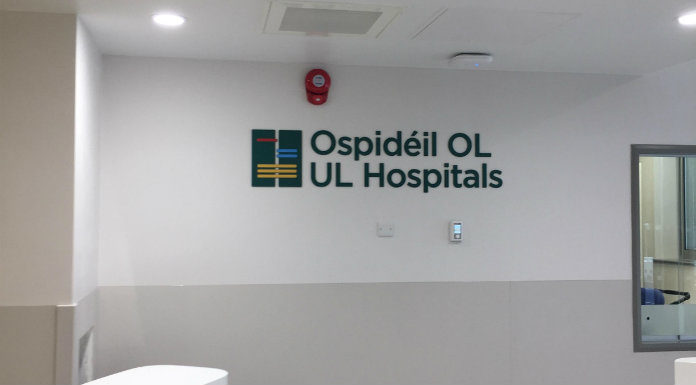The UL Hospitals Group insists that improving patient experience times continues to be a priority.
The group has issued its Winter Preparedness Plan to the Department of Health, saying it includes new proposals to mange the busiest period at one of the country’s busiest EDs.
This includes prioritising patients aged 75 and over, and reviewing elective procedures on a daily basis.
The hospital group issued a statement to Clare FM after high levels of overcrowding early this week, although that number dropped significantly yesterday.
Full Statement From the UL Hospitals Group:
The ED in University Hospital Limerick is one of the busiest in the country with over 64,000 attendances in 2016.
The numbers presenting continues to increase year-on-year, in the period from May to September 2017 the number of attendances increased by almost 7% when compared to the same period last year. Of those presenting to the ED, the proportion requiring admission, including many frail elderly patients, has also increased. From May to September 2017, the number of patients admitted to wards at UHL increased by almost 34% compared with the same period in 2016. The number of over 75’s admitted has increased by over 30% in the same period.
Traditionally, average attendances at the ED have been approximately 150 over a 24-hour period from Mon – Fri and 120 per 24 hours at weekends. Attendances have been significantly above these levels in recent weeks with our average increasing to 195 over a 24 hour period, between midnight on Saturday the 21st of October and midnight on Sunday the 22nd of October, there were 195 attendances in the ED.
UL Hospitals Group regrets that any patient has to face long waits in our ED during busy periods. However it was always acknowledged by the hospital that the new ED would not spell an end to the phenomenon of trolley waits.
UHL has 400 inpatient beds and this is recognised as not being sufficient for the needs of the Mid West Region. We continue to operate at 110-115% occupancy. A bid to build an additional 96 bed block on the UHL site has been submitted to the Department of Health and approval has been granted for funding of the design stage of the build. The New ED was the first phase of improving patient facilities however a new building will not completely solve crowding when bed capacity is low. UL hospitals work continuously to improve patient flow. We operate a specific improvement plan week on week to ensure our patients continue to receive good care.
Following refurbishment of the old ED at UHL, 17 new beds, opened the 18th September. These 17 medical short-stay beds, based in Ward 1A provide targeted care for patients presenting to the ED and Acute Medical Assessment Unit who require brief hospitalisation, i.e. no greater than 48 hours.
The 17 bed medical short stay ward, which will operate 7 days per week, 24 hours a day, is one of the measures designed to address the bed capacity needs of UL Hospitals Group. These beds are funded via Winter funding assigned from the dept of health to the HSE.
There are currently 20 beds closed in St John’s Hospital. Fire safety works prevented the opening of these beds since May. We are in discussions with the St John’s Hospital management team regarding a specific re-opening date for these beds, we are working towards the end of October, there is a nursing recruitment campaign underway at present and the specific date for re-opening will be set depending on the successful recruitment of these staff.
UL Hospitals Group has submitted its Winter Preparedness Plan for 2018 to the HSE & Department of Health. This plan sets out new measures, in addition to those outlined below, to manage the predicted number of attendances in the Emergency Department (ED) at University Hospital Limerick (UHL) during the forthcoming Winter period.
A number of measures are currently taken to relieve pressure on the ED at UHL in line with our current escalation plan including the transfer of suitable patients from UHL to Ennis Hospital, Nenagh Hospital, St John’s Hospital and Croom Orthopaedic Hospital; the transfer of appropriate patients to community care settings; working closely with Community Intervention Teams to provide antibiotics and other basic care in a patient’s home or care facility; communication with GPs to ensure patients are referred to the ED only where appropriate; extra ward rounds; and as a last resort, extra beds are put on wards.
In addition, all elective procedures are reviewed daily in UHL.
New measures in the Winter Plan include prioritisation of patients over 75 in the ED, improving Patient Flow in the Minors Area of the ED and initiatives to improve access to Diagnostics for ED patients.
A single point of contact for GPs, called the Bed Bureau, has been introduced which helps to stream patients to the correct Hospital department within UL Hospitals Group.
The new ED at UHL has designated spaces for 49 patients and admitted patients waiting for a bed are often in single rooms or designated bays. While patients still face delays in the new ED, it provides for a much improved patient experience compared to the old department which had 33 bays and has greatly improved the privacy, safety and dignity of our patients.
Improving Patient Experience Times (PET) continues to be a priority for UL Hospitals Group. There have been notable improvements in the area of paediatrics since the new ED opened in May with 6 hr PET times reducing on average by over 10%.
In addition, as we face into the flu season, UL Hospitals Group and HSE Mid West Community Healthcare joined forces earlier this month to launch a flu campaign aimed at vaccinating thousands of healthcare workers in community, primary, mental health and acute hospital settings across Limerick, Clare and Tipperary. On the 9th of October, the HSE launched its national flu campaign with at-risk groups, including the over-65s; people with long-term chronic illnesses; pregnant women and residents of nursing homes and other longstay facilities, encouraged to get the vaccine from their family doctor or pharmacist.







